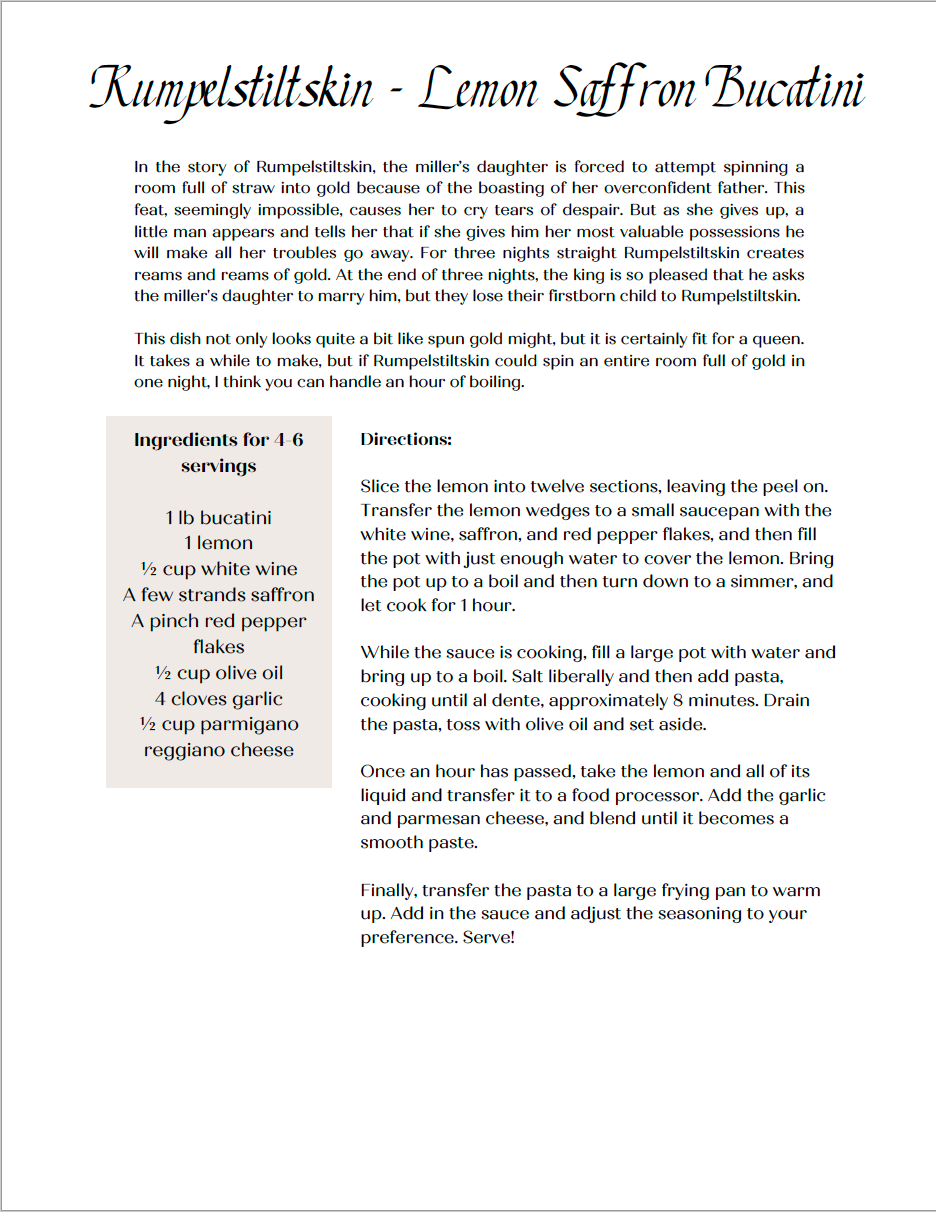Once, a long time ago, this author hit upon an idea in a far-off land called Beloit College. The idea was for a cookbook inspired by fairy tales, one that would explore the nuances of metaphor and food symbolism in tales both cautionary and otherwise. Everyone around me was excited about it (notably the president of the college, who sent me this wild email about how my project made him “proud to be a Beloiter.” Thanks, Scotty B.), but the publishing industry did not exactly agree with this sentiment.
Anyone who knows me knows that if you get me talking about books or food or books and food, I can keep going, and going, and going. I’m fascinated by empathy and human connection, and it’s always seemed to me that the edible and the imaginary are our very best paths to understanding each other better.
Also, fairy tales are just fun. There’s something about these stories that everyone thinks they know that gets me excited.
Folktales teach us lessons of morality. To be kind to strangers. That lying is occasionally the right thing to do. That the path we thought we wanted to take isn’t always the right one. That, to quote Stephen Sondheim, “nice is different than good.”
Despite putting years of work into trying to make this book a reality through traditional means (sometime I’ll tell you about my mess of a book proposal) and giving up on it multiple times, today I am happy to announce that I’m self-publishing a truncated, indie version to gain interest and see what people think of it.
If it excites people, I’m going to finish writing the full version of this thing, dammit.
This zine-ified cookbook features illustrations by famous early 20th-century fairy tale illustrator Arthur Rackham, cover art by the ever-talented Logic Thompson, and eleven interpretive recipes by yours truly. The full version will include at least 30 recipes, original illustrations, and maybe even some food photography.
If you’re in the NYC area, you can pick up a print copy tomorrow at the Brooklyn Independent Comics Showcase at St. Mark’s Comics in Industry City, where I’ll be tabling all day. Otherwise, you can pick up a digital version on my website for a discounted price of $10.
I also include my Rumpelstiltskin recipe here, which features a technique inspired by a Yotam Ottolenghi salad dressing. If you ever wanted to spin straw into gold, now’s your chance.
In the story of Rumpelstiltskin, the miller’s daughter is forced to attempt spinning a room full of straw into gold because of the boasting of her overconfident father. This feat, seemingly impossible, causes her to cry tears of despair. But as she gives up, a little man appears and tells her that if she gives him her most valuable possessions, he will make all her troubles go away. For three nights straight, Rumpelstiltskin creates reams and reams of gold. At the end of three nights, the king is so pleased that he asks the miller's daughter to marry him, but they lose their firstborn child to Rumpelstiltskin.
This dish not only looks quite a bit like spun gold might, but it is certainly fit for a queen. It takes a while to make, but if Rumpelstiltskin could spin an entire room full of gold in one night, I think you can handle an hour of boiling.








